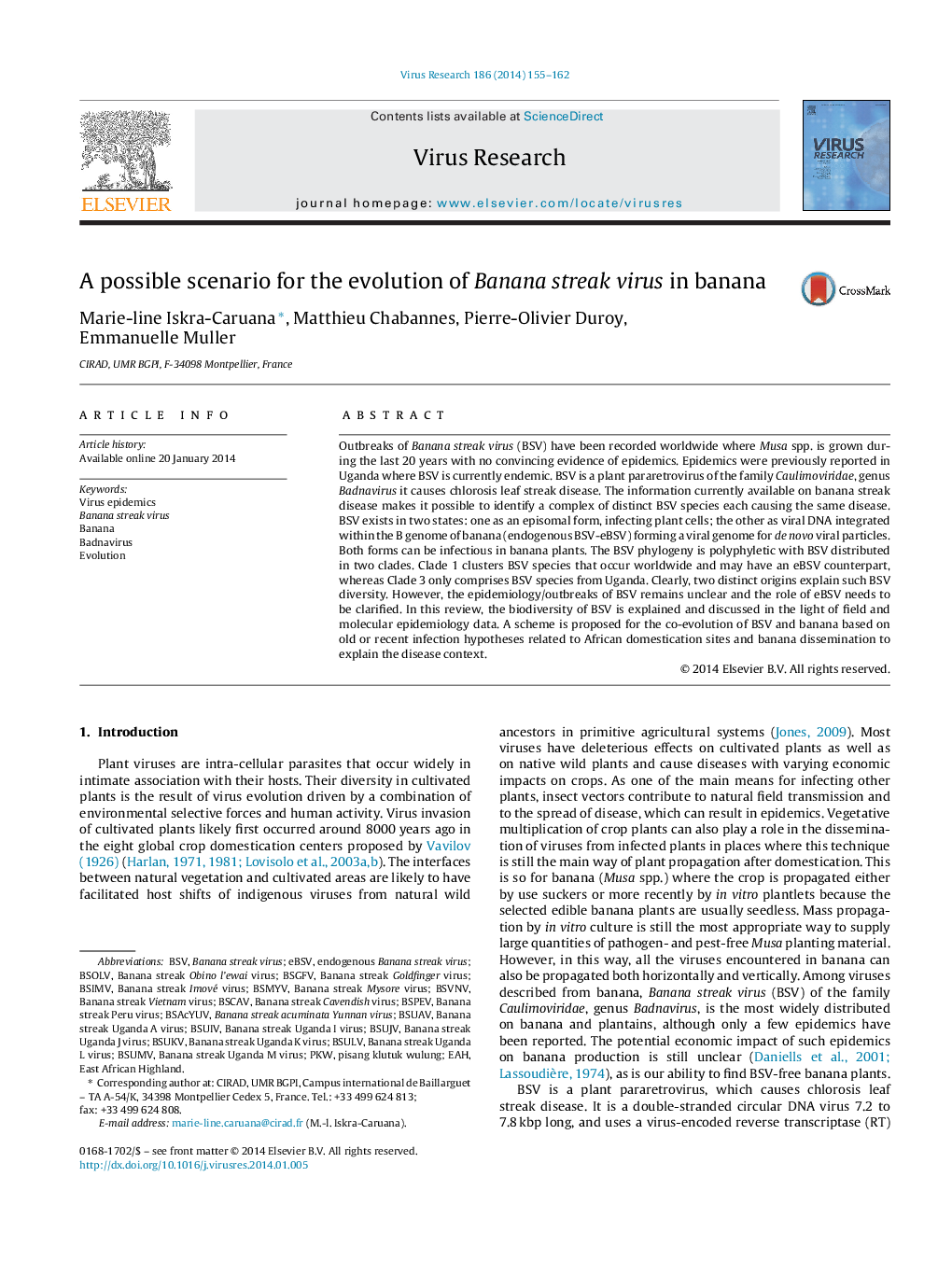| Article ID | Journal | Published Year | Pages | File Type |
|---|---|---|---|---|
| 6142450 | Virus Research | 2014 | 8 Pages |
â¢The ecology of BSV species that infect banana results in a very specific process of co-evolution with its host plant.â¢Two kinds of interactions occur, each of which attests to a part of the co-evolutionary history of badnavirus species and banana.â¢The current diversity of BSVs is explained in the light of the two existing viral forms: episomal and integrated into the host genome.
Outbreaks of Banana streak virus (BSV) have been recorded worldwide where Musa spp. is grown during the last 20 years with no convincing evidence of epidemics. Epidemics were previously reported in Uganda where BSV is currently endemic. BSV is a plant pararetrovirus of the family Caulimoviridae, genus Badnavirus it causes chlorosis leaf streak disease. The information currently available on banana streak disease makes it possible to identify a complex of distinct BSV species each causing the same disease. BSV exists in two states: one as an episomal form, infecting plant cells; the other as viral DNA integrated within the B genome of banana (endogenous BSV-eBSV) forming a viral genome for de novo viral particles. Both forms can be infectious in banana plants. The BSV phylogeny is polyphyletic with BSV distributed in two clades. Clade 1 clusters BSV species that occur worldwide and may have an eBSV counterpart, whereas Clade 3 only comprises BSV species from Uganda. Clearly, two distinct origins explain such BSV diversity. However, the epidemiology/outbreaks of BSV remains unclear and the role of eBSV needs to be clarified. In this review, the biodiversity of BSV is explained and discussed in the light of field and molecular epidemiology data. A scheme is proposed for the co-evolution of BSV and banana based on old or recent infection hypotheses related to African domestication sites and banana dissemination to explain the disease context.
